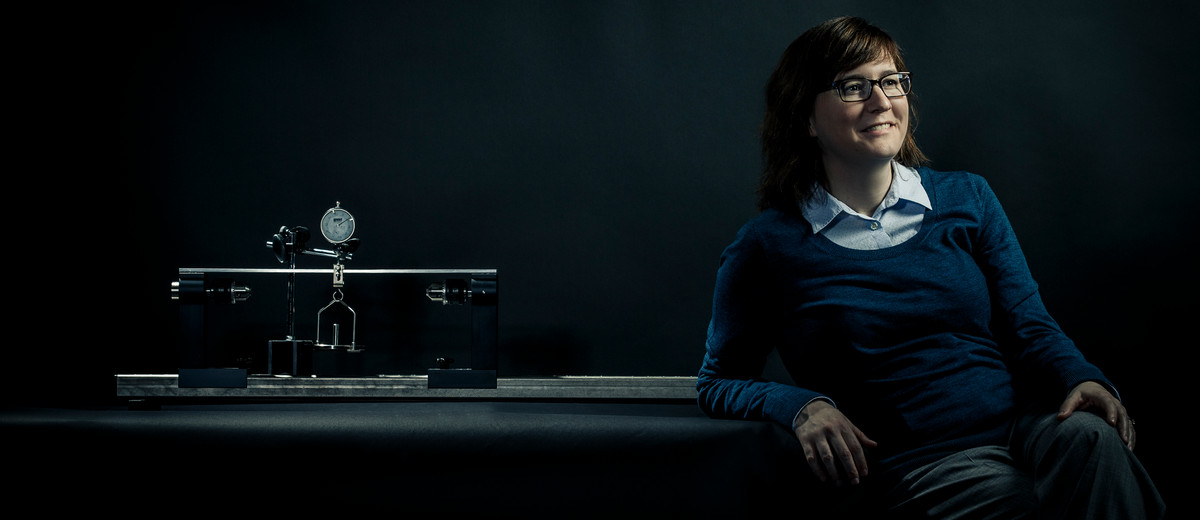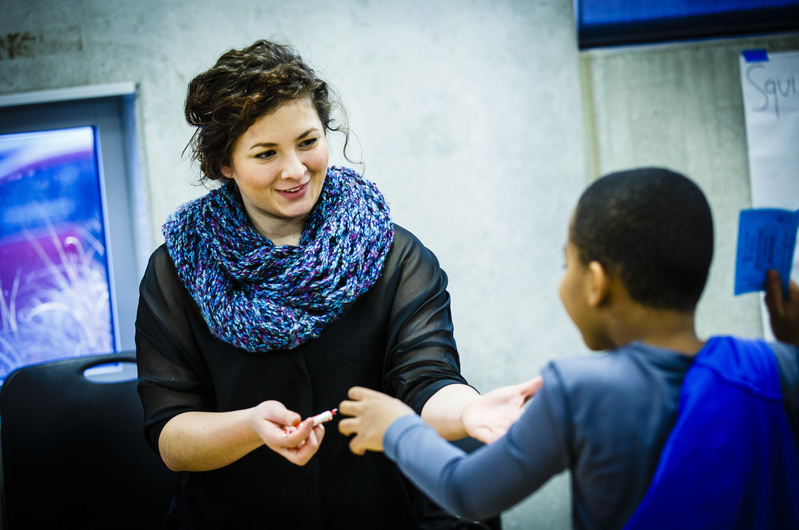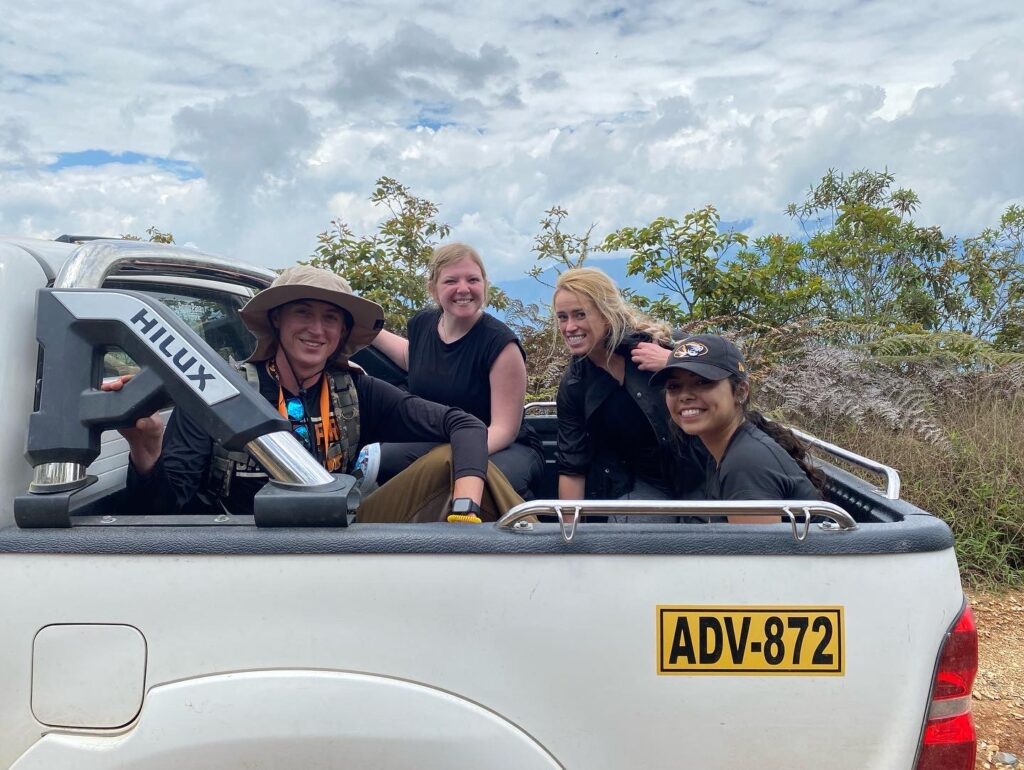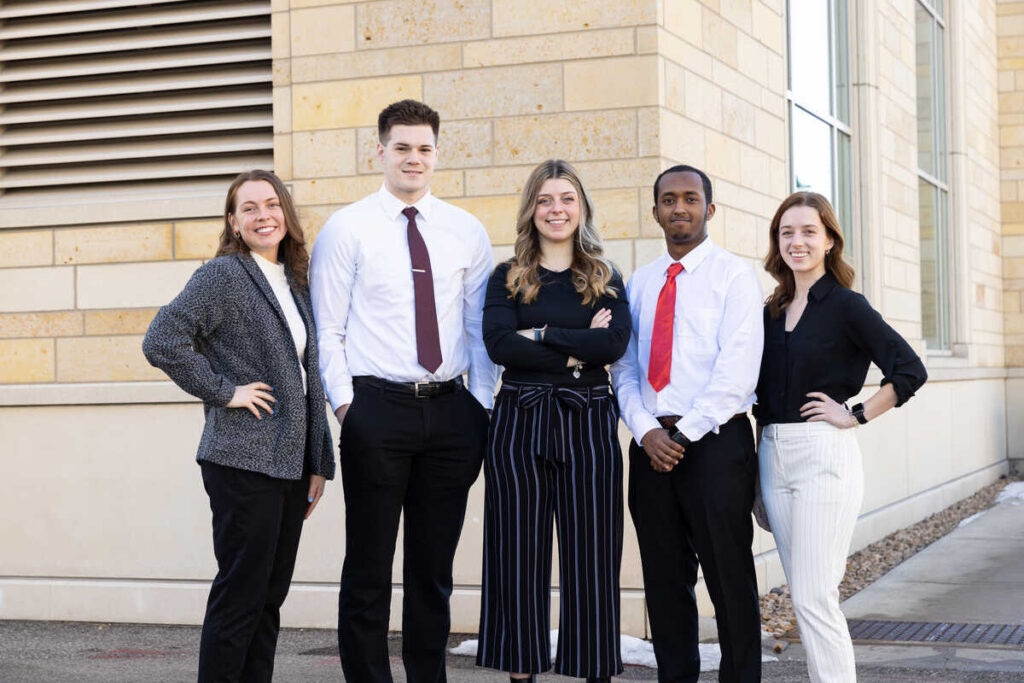Junior Lauren Van Beek and freshman Kelly Ancel stand around a table after class in the new Design Center, talking with a handful of fellow students. A few minutes ago they were in a class where, as women mechanical engineering students, they were in the vast minority. But there are smiles on both of their faces as they describe their experiences in engineering at the University of St. Thomas. Perhaps that’s partly because, out of the 10 Mechanical Engineering program’s professors, five are female, an exceptional rate of gender balance and one of the highest ratios in the nation.
Underrepresentation of female students in mechanical engineering is a reality even in today’s academic landscape, and is compounded by similarly skewed numbers in those who lead the classes: Nationwide, only about 11 percent of mechanical engineering faculty are female.
“It’s so great to have all these role models who have been through these same issues of being a minority,” Van Beek said. “We can have conversations about work-life balance and what that means for a woman in a male-dominated field. It’s really cool to have role models that have dealt with that. It feels like they’re pushing for you.”
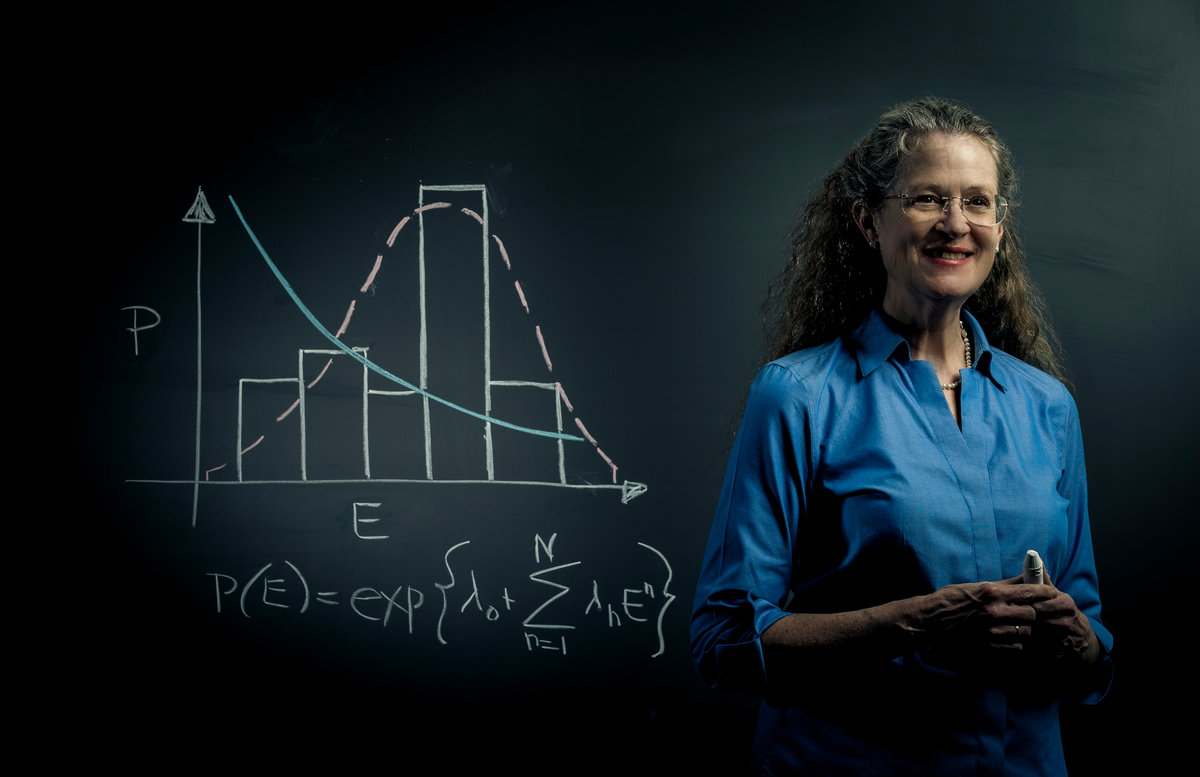
Dr. Sarah Baxter, Ph.D., University of Virginia
Research Passion: Probablistic modeling of engineering systems
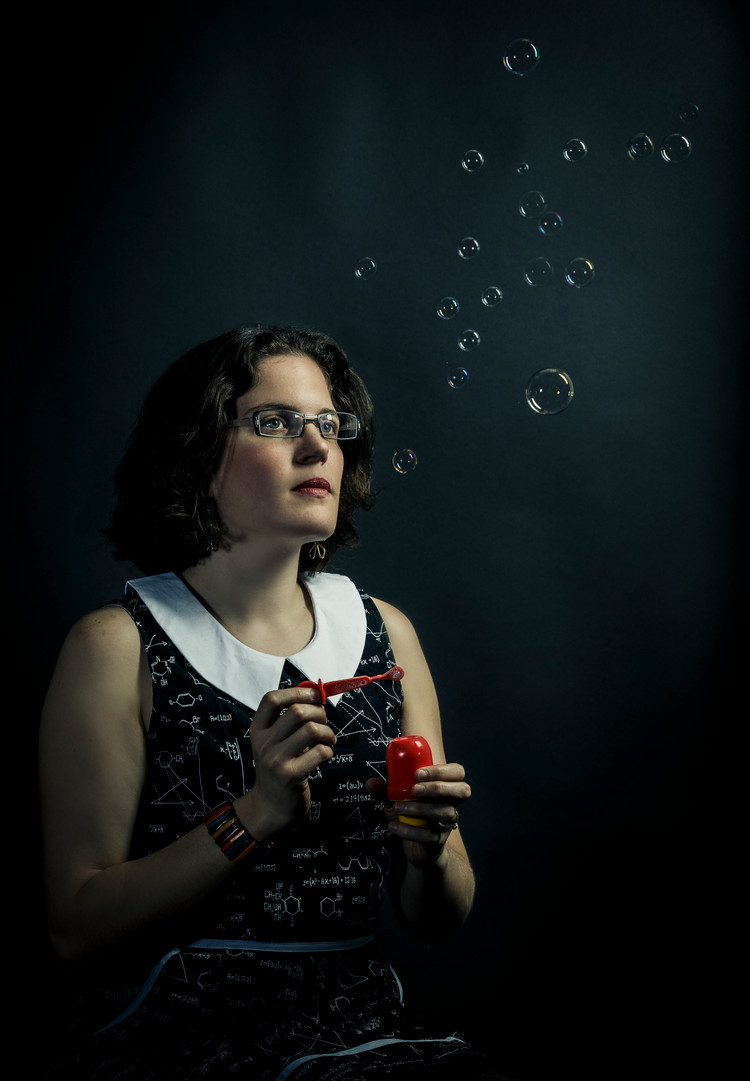
Dr. AnnMarie Thomas, Ph.D., Caltech
Research Passion: Engineering design and playful learning.
For example, Van Beek cited the woman faculty-led, monthly “Women in Engineering” lunch series at St. Thomas as particularly important for her. The forum provides outstanding opportunities to seed mentorships, gain insights into the profession and network.
St. Thomas’ mechanical engineering faculty makeup qualifies as a happy accident; Don Weinkauf, Dean of the School of Engineering, pointed out that every professor was hired simply because they were the best candidate for the job, regardless of gender. The effects of having five women – Drs. Katherine Acton, Sarah Baxter, Camille George, Brittany Nelson-Cheeseman, and AnnMarie Thomas – are as welcome as they were unintentional.
“They all have different strengths and passions. They each bring a unique perspective to our work here,” Weinkauf said. “That matches well with the spectrum of students coming into our programs.”
The ability to bring more women into the engineering professions is a national concern, but the healthy faculty gender balance at St. Thomas generates a particular sense of optimism.
“Our balance means I can put my energies into the things that really matter to me. It’s not a distractor, which I know women face at other institutions,” Nelson-Cheeseman said. “It liberates me to focus on why I’m here and my connection to the students.”
That potential for connection is a distinctive element of the St. Thomas engineering educational experience. The mechanical engineering faculty, male and female, bring a range of interests, personalities and teaching styles, working together to foster the development of each individual student.
“You can tell the women engineering professors, and for that matter all of our professors, are dedicated to forming us into full, great people,” Van Beek said.
The gender balance also adds to the experience for the male students, who form a large majority of students in the classes female professors teach and lead. “That’s an important exposure,” Acton said. “It helps those male students to get used to working with women around them, and in teams being led by women.”
Dr. Camille George, the first of St. Thomas’ current female engineering professors to arrive, points out with optimism the idea that such shifts in thinking about women in engineering – like the dated notion that females shouldn’t be doctors – are generational, and take time. That optimism is bolstered at St. Thomas, where mechanical engineering professors stand as role models for their students and each other, and the focus is properly aimed at what people can do as engineers.
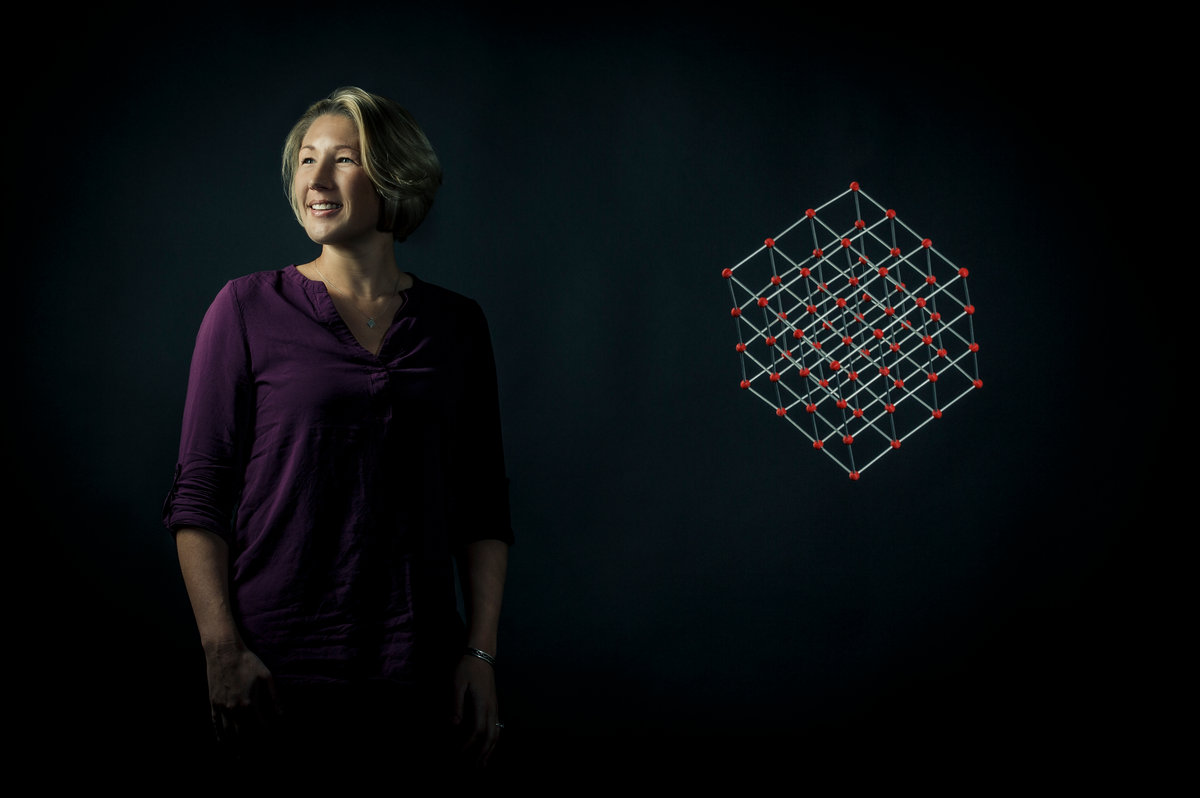
Dr. Brittany Nelson-Cheeseman, Ph.D., Cal-Berkeley
Research Passion: Advanced Engineering Materials
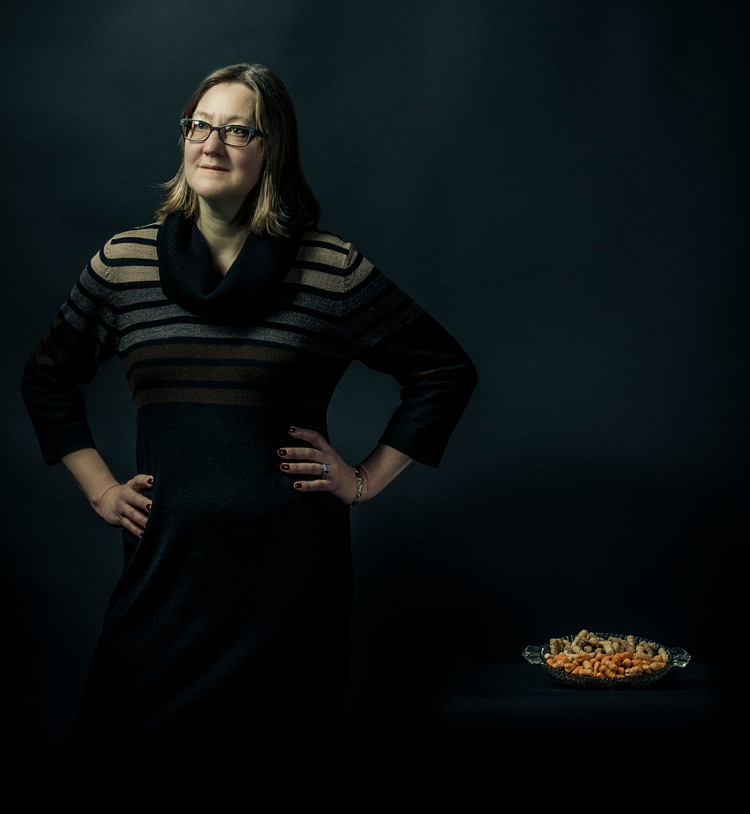
Dr. Camille George, Ph.D., University of Minnesota
Research Passion: Post-harvest processing of food
The spectrum of things that people can do as engineers is embodied in the research that all five female faculty are engaged in with their students. George leads teams to remote places around the developing world to design new technologies for the post-harvest processing of food. Nelson-Cheeseman has students studying thin-film crystalline materials for advanced energy applications, while Acton and Baxter’s groups collaborated on the advanced structural analysis of composite systems. Thomas is moving forward K-12 engineering education with a large group of students in her Playful Learning Lab.
“St. Thomas is such a good environment. I never felt held back or that there was anything I couldn’t do,” said Dr. Ann Majewicz, a 2008 alumna, who received her Ph.D. from Stanford, and now is a professor at University of Texas - Dallas. “I don’t think I would have been where I am if not for St. Thomas and all the amazing engineering professors.”
Success stories like Majewicz’s are not uncommon for St. Thomas. The women faculty play an integral role in helping make those stories possible, highlighted by the fact they are success stories themselves.
“Our students know that we have also been in the minority, and it hasn’t limited us from pursuing our passion for engineering, while bringing our own distinctive style to our work,” Dr. Thomas said.
“Distinctive style” are words that Weinkauf likes to hear. He knows that the face of the engineering profession has to change, and promoting the success of women in the field is one piece of the puzzle. But in the end, the evolution of engineering is not simply a matter of gender or race.
“We need different perspectives, different problem solving styles, a wide range of experiences, and a deeper understanding of the human condition, regardless of race or gender,” Weinkauf said. “This is what will bring solutions to our most difficult problems. And to bring that all to bear, our work here is to ensure that the face of engineering at St. Thomas is the face of change.”
